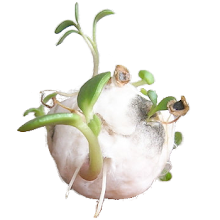So my shoulder has been bothering me lately and the time I would usually spend making paper has been replaced by other things. Like saying yes to a spontaneous road trip to Vermont, a weeknight dinner invitation with girlfriends, and a Saturday morning spent banding birds… Yes, I said banding birds. I have a friend who is an ornithologist and he invited me and my family to spend the morning catching and banding birds. It's not an activity that I have ever thought about doing, or could have guessed I would get the opportunity to do. But I once remember a teacher telling me that in order to create art of any kind, you have to have varied experiences, meet new people and try new things. So, off I went.
I wasn't sure what to expect. I imagined crouching quietly behind a rock for many hours in the deep woods, rubbing the cramps out of my legs while I tried not to move, waiting for a bird to be attracted by some kind of bait and then trying to grab it with a net. I really couldn't imagine the process. It was nothing like what I thought and turned out to be a very robust, active process, not quiet at all. We didn't go deep into the woods and far afield. We walked into my friend's back yard and set up nets that were 30 feet long with special little pockets in them, suspended between two poles. He took his iPad and played bird songs that attracted the males because they came looking for a territorial fight. When the birds flew into the nets (they are so thin and black that they are invisible to birds and quite hard to see for humans, too), they hit the net, dropped into the pocket and got tangled enough that they couldn't fly out. We simply walked up, untangled them and gently pulled them out, then placed them in a holding bag like a little pillowcase. At times there were multiple birds caught in nets and we were running around getting them out.
It was a quick and easy learning process to use special pliers to put the band on their fragile little toothpick legs, take their weight (by inserting them into a toilet paper tube and putting them on a scale!), wing length and other data about them and then log the data onto a special banding website where other scientists can access the information should they catch the same bird. All in all a really cool day.
This nuthatch was the easiest bird to tag, along with the chickadees, because they are so small and easy to control.
This tufted titmouse was the first bird we caught after getting tons of chickadees and oven birds, as well as a bunch of nuthatches, so we were excited for a new bird. I pet his head to feel his tuft and it sprung right back up, a stiff little tuft of feathers. There are ways you can hold a bird to get control of them, by grasping the tops of their legs, but if they are mad enough, it's easy for them to get a peck in!
You know the sound a woodpecker makes when it is trying to find insects in a tree? Imagine that on your hand. My ornithologist friend called the morning a wrap after this gorgeous hairy woodpecker got a few too many good pecks in on his hand. In 20 years of tagging birds, he never had one draw blood before. Until today. It was really exciting, nonetheless. Catching a woodpecker is rather uncommon.
This blue jay was MAD about being caught and got so tangled up in the net trying to fight his way out that we had to use scissors and cut him out. It took about 15 minutes to get him released. What surprised me most about the whole scientific process was how much we pulled on their legs to band them and pulled on their wings to measure them, and stuffed them into toilet paper tubes to weigh them. Must be a stressful experience for a bird, even if it is not harmful.
The best part was at the end of all the data collecting, we just held out our arms, opened our hands and let them fly. OK, I wanna do it again next weekend!






No comments:
Post a Comment